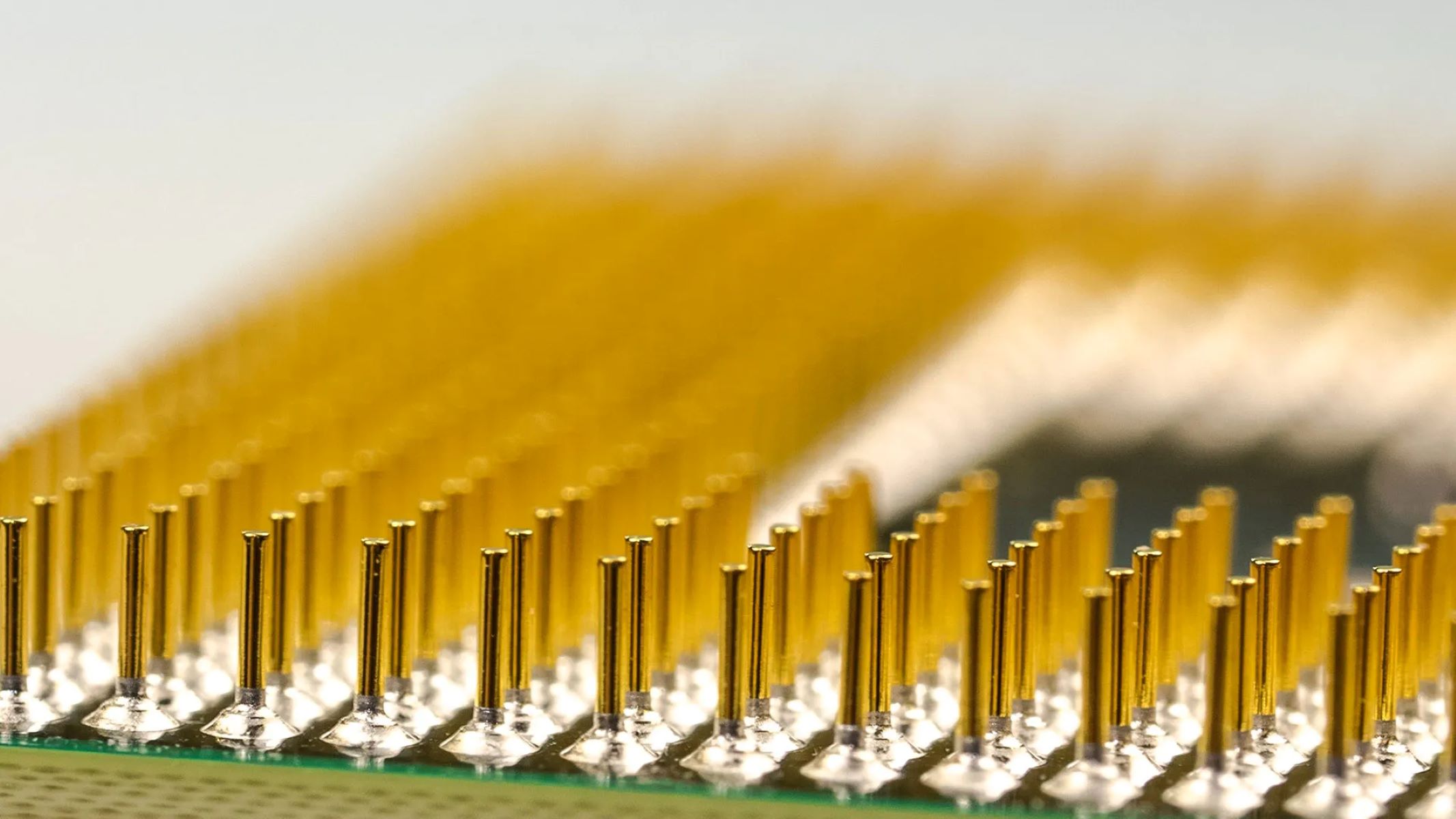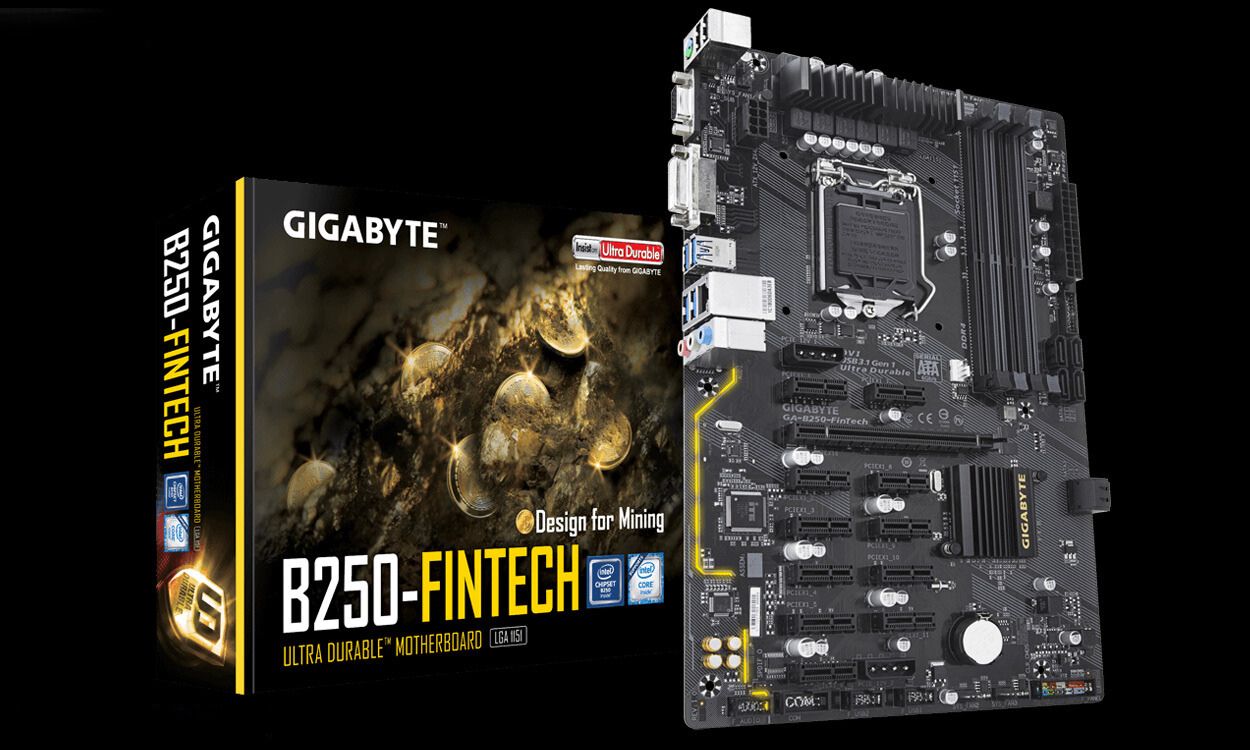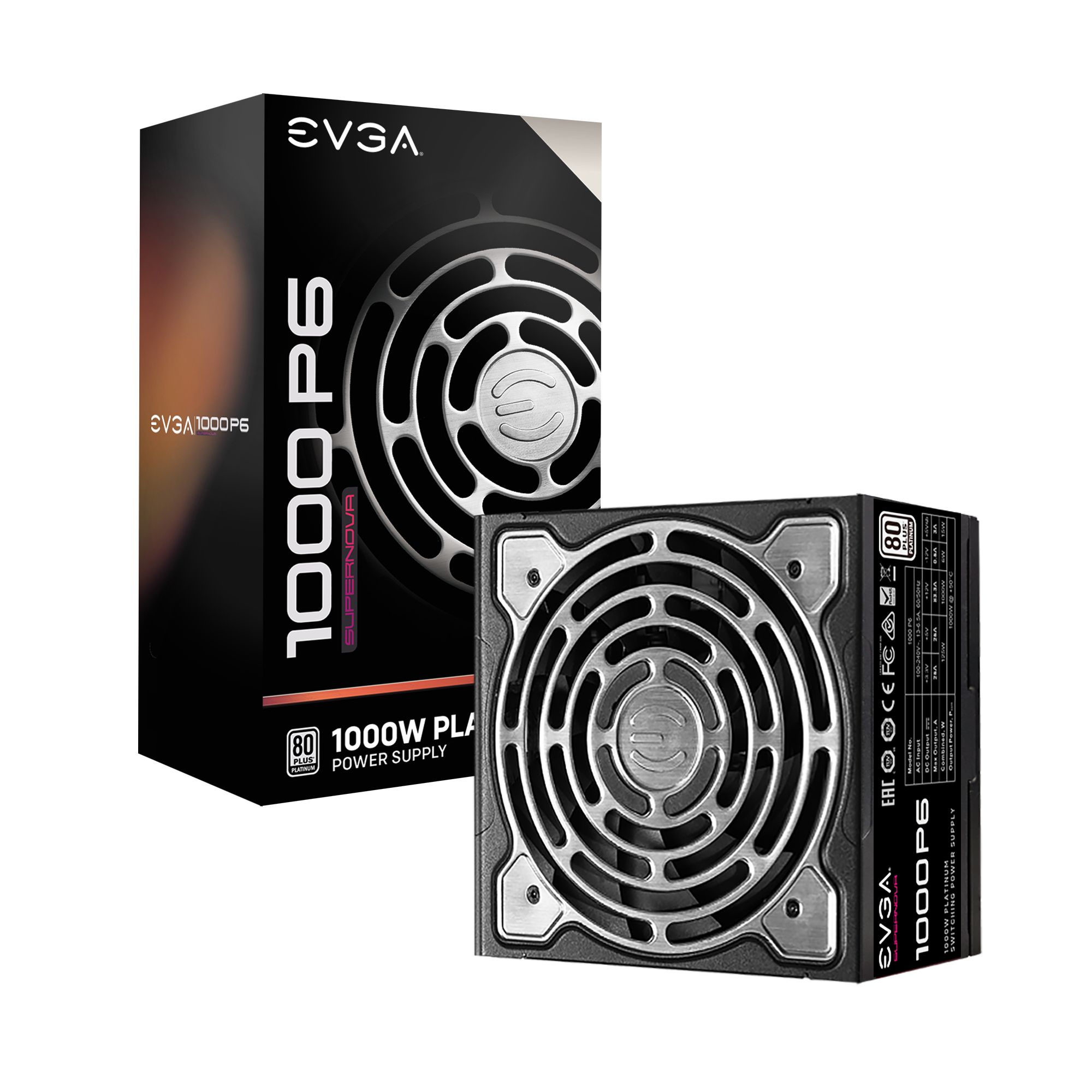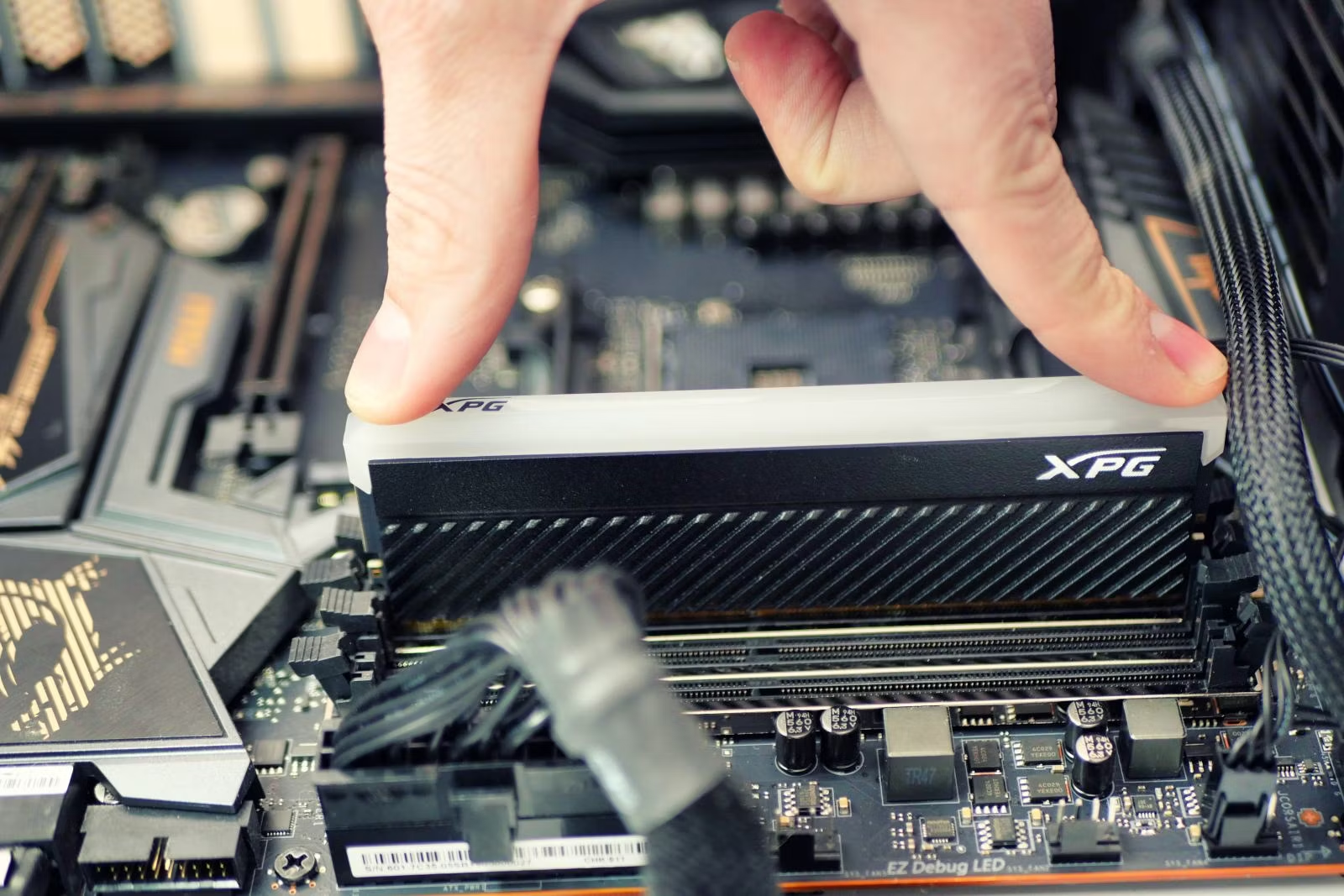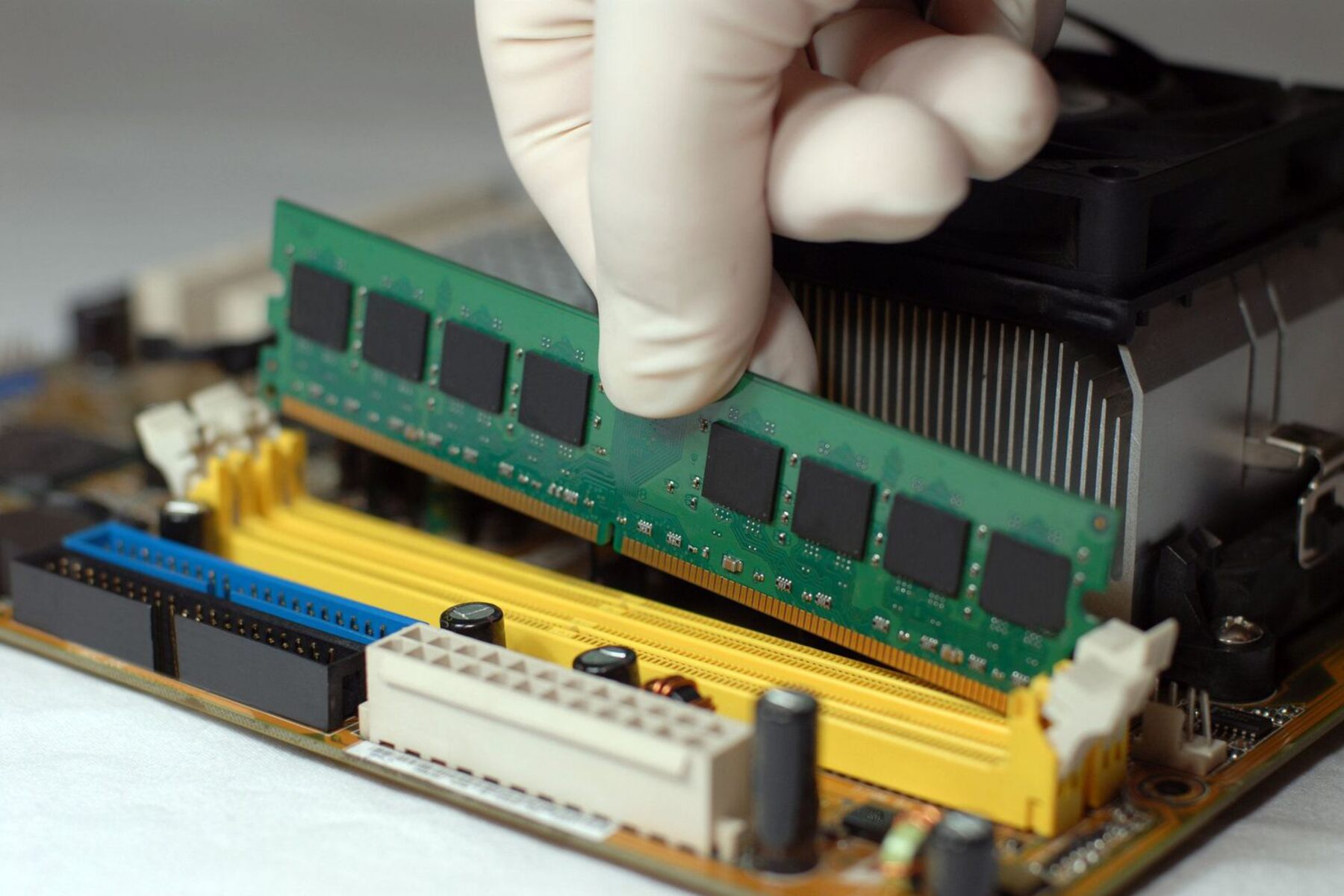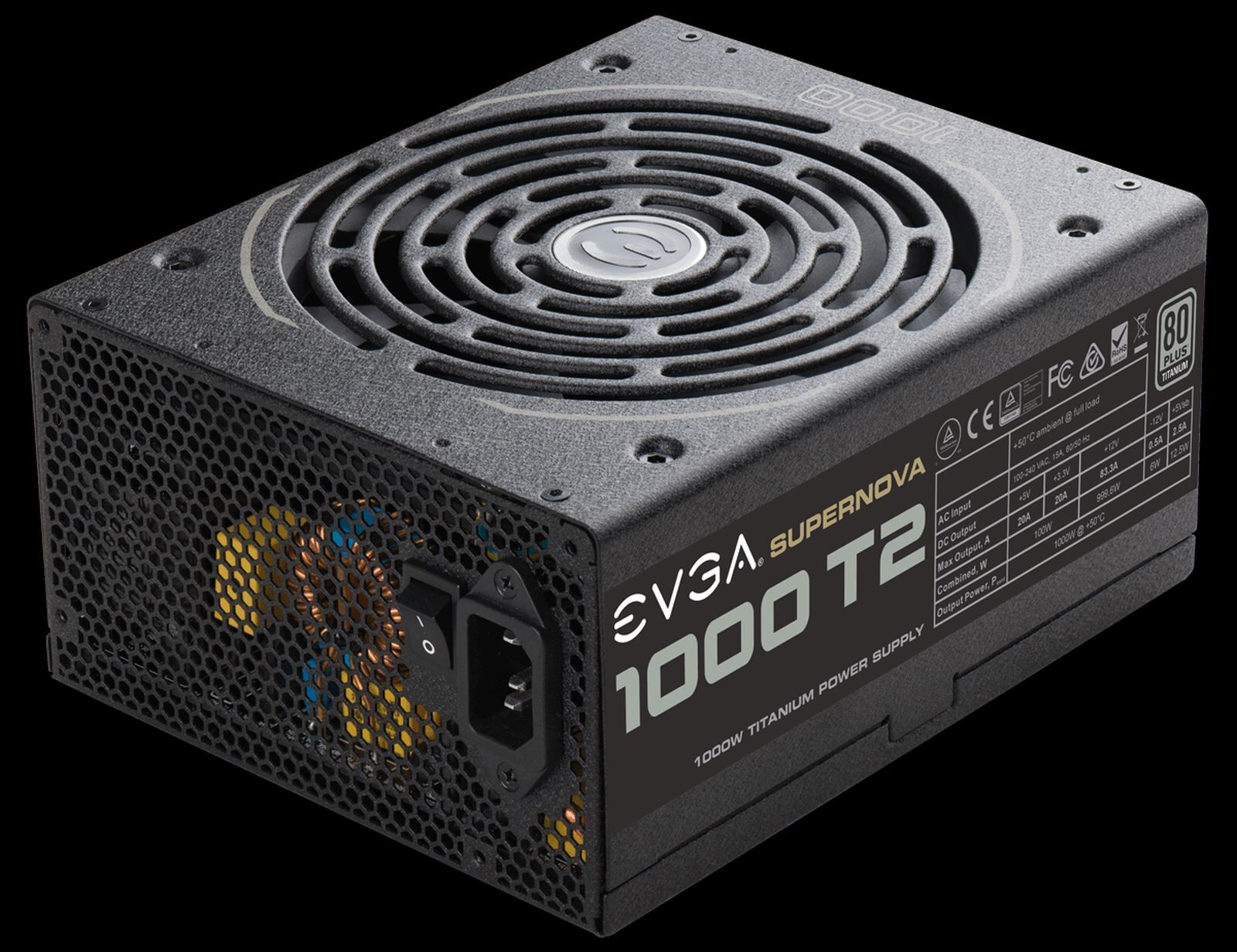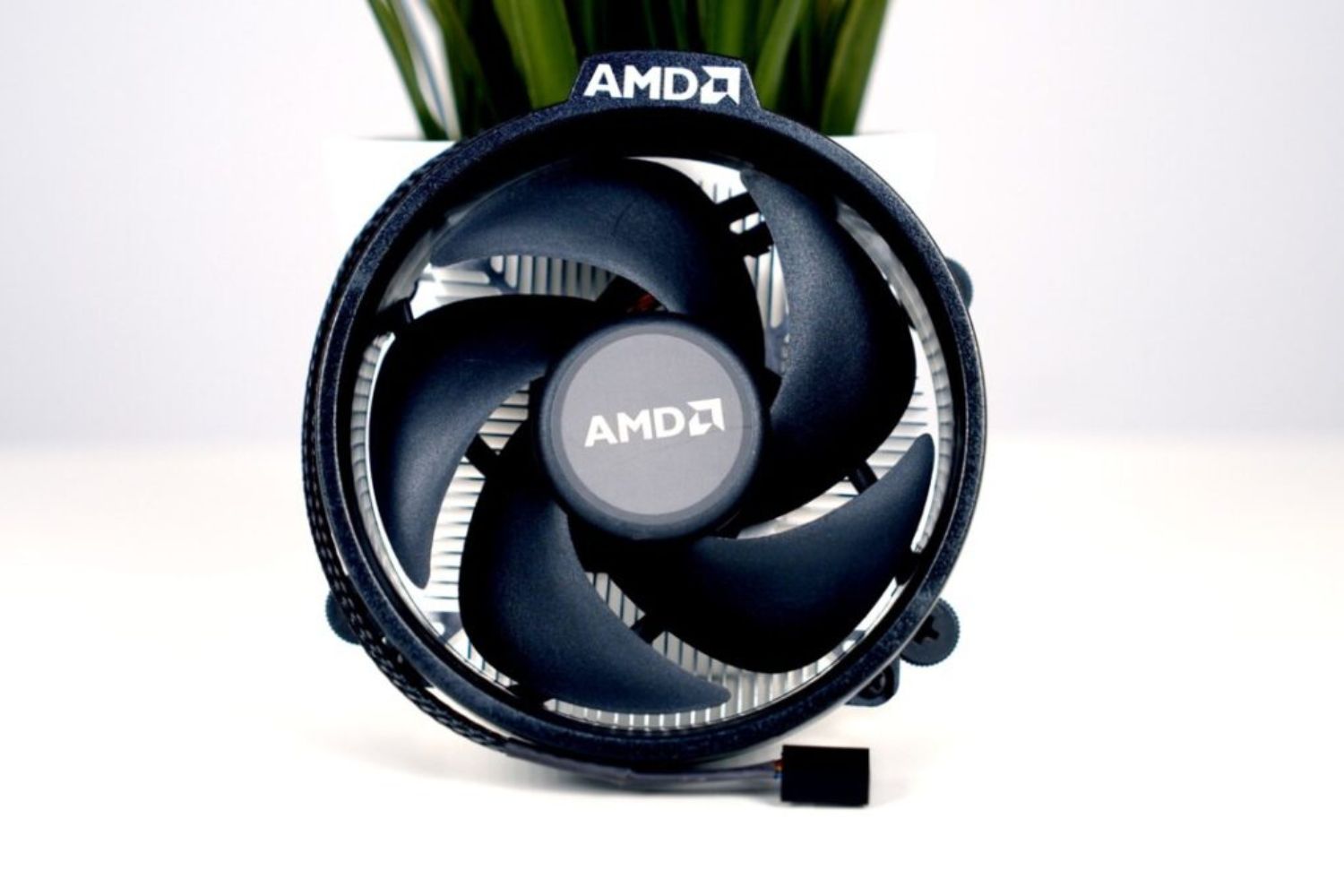Introduction
When it comes to technology, we often think of the latest smartphones, gaming consoles, or laptops. But have you ever wondered what lies beneath the surface of these electronic devices? The answer is a crucial component known as a motherboard.
The motherboard is like the central nervous system of a computer or electronic device, connecting all its components and allowing them to communicate and function together seamlessly. But did you know that hidden within this intricate network of circuitry lies a small amount of a precious and valuable metal – gold?
Gold has long been revered for its beauty and value, but its use goes beyond jewelry and investments. It has a crucial role to play in the world of technology, and motherboards are no exception. In this article, we will explore the fascinating world of motherboards and delve into just how much gold can be found within them.
Join us as we uncover the secrets of these technological marvels, learning about the components that make up a motherboard, the importance of gold in their design, and the methods used to extract this precious metal. We will also address the environmental impact of gold extraction and the growing trend of fair and responsible gold sourcing.
So, whether you’re a tech enthusiast or just curious about what’s inside your favorite electronic gadgets, let’s embark on this journey to discover the hidden gold within a motherboard.
What is a motherboard?
A motherboard, also known as a mainboard or system board, is the primary circuit board within a computer or electronic device. It serves as a foundation and central hub, connecting various components to enable communication and coordination between them.
Think of a motherboard as the backbone of a computer. It provides electrical connections, power distribution, and pathways for data transfer between the central processing unit (CPU), memory modules, storage devices, expansion cards, and other essential components.
The motherboard acts as a connector and controller, ensuring that all the different hardware components work together harmoniously. It contains a series of complex circuits, pathways, and sockets that allow the CPU and other components to communicate and exchange data.
In addition to providing connectivity, a motherboard also houses critical controllers and chips that manage system functions such as booting, input/output (I/O) operations, and power management.
The size and shape of motherboards can vary depending on the type and form factor of the computer or device they are designed for. Common form factors include ATX, Micro-ATX, Mini-ITX, and Extended ATX, each with its own set of size and layout specifications.
In recent years, motherboards have evolved to include advanced features and technologies such as built-in Wi-Fi, Bluetooth, high-speed USB ports, and support for multiple graphics cards. These advancements have allowed for greater flexibility and performance in modern computing.
Overall, the motherboard is the vital component that brings all the other hardware together, ensuring seamless operation and efficient utilization of resources. Without it, computers and electronic devices as we know them would not be able to function.
Components of a motherboard
Now that we have a basic understanding of what a motherboard is, let’s take a closer look at its components. A motherboard is a complex assembly of various electronic parts and circuits, each with its own specific function. Here are some of the key components commonly found on a motherboard:
1. Central Processing Unit (CPU): The CPU, often referred to as the “brain” of the computer, is responsible for executing instructions and performing calculations. It is typically located in a socket on the motherboard and is connected to other components via buses.
2. Memory Slots: Motherboards feature slots to accommodate memory modules, such as RAM (Random Access Memory). RAM provides temporary storage for data that is actively being used by the CPU, allowing for faster access and processing.
3. Expansion Slots: These slots allow for the installation of expansion cards, such as graphics cards, sound cards, or network interface cards. These cards provide additional functionality and capabilities to the computer.
4. Chipset: The chipset is a collection of integrated circuits that control the flow of data between the CPU, memory, storage devices, and other components. It manages the communication and coordination between these components, ensuring efficient operation.
5. Storage Connectors: Motherboards feature various connectors for connecting storage devices like hard drives and solid-state drives (SSDs). These connectors include SATA, M.2, and NVMe, each with its own data transfer speeds and compatibility.
6. Power Connectors: The motherboard requires power to operate, and power connectors provide the necessary electrical supply. These connectors include the main power connector (usually a 24-pin ATX connector) and additional power connectors for the CPU and other components.
7. BIOS/UEFI: The Basic Input/Output System (BIOS) or Unified Extensible Firmware Interface (UEFI) is firmware embedded on the motherboard. It initializes the hardware components during the booting process and provides a user interface for configuring system settings.
8. I/O Ports: The motherboard features a range of input/output (I/O) ports, such as USB ports, audio jacks, Ethernet ports, HDMI or DisplayPort connectors, and more. These ports allow for the connection of peripheral devices and enable communication with the outside world.
These are just a few of the key components found on a motherboard. Each component plays a crucial role in the overall functioning of the computer, working together to ensure a seamless and efficient computing experience.
Understanding the gold content
Gold is a highly valued and sought-after precious metal, known for its lustrous appearance and resistance to corrosion. While gold is commonly associated with jewelry and financial investments, it also has an important presence in the world of technology, including motherboards.
Gold is primarily used in the manufacturing of motherboards due to its excellent conductivity and corrosion resistance. These properties make it an ideal choice for connecting critical components and ensuring reliable electrical connections. Gold is also highly malleable, allowing it to be shaped into thin layers or plating for efficient use in electronic circuitry.
One of the main areas where gold is utilized on motherboards is in the connectors and pins of various components. For example, gold is commonly found in the CPU socket, memory slots, expansion slots, and other connectors where there is a need for stable and efficient electrical connections.
Gold is preferred over other metals, such as copper or silver, because it does not tarnish or oxidize easily. This ensures that the electrical conductivity remains stable over time, minimizing the risk of poor connections or signal degradation.
It’s important to note that while gold is valuable, the amount used in a single motherboard is relatively small. The gold content in a motherboard is typically measured in terms of grams or milligrams. Although it may vary depending on the specific model and manufacturer, the average gold content in a standard consumer motherboard is estimated to be around 0.03 grams.
While this may seem like a minuscule amount, considering the sheer number of motherboards produced and used worldwide, the collective gold content becomes significant. Additionally, in the context of recycling and environmental concerns, every gram of gold recovered from outdated or damaged motherboards contributes to reducing the need for mining new gold.
Understanding the gold content in a motherboard helps us appreciate the intricate relationships between technology and precious metals. It highlights the importance of responsible sourcing, recycling, and extraction practices to ensure the sustainable use of these valuable resources.
How is gold used in a motherboard?
Gold plays a crucial role in the design and functionality of a motherboard. While the overall gold content in a motherboard is relatively small, its strategic placement and utilization are vital for ensuring reliable and efficient performance. Here are some key areas where gold is used in a motherboard:
1. Connectors and Pins: Gold is commonly found in connectors and pins throughout the motherboard. These connectors ensure proper electrical connections between components such as the CPU, memory modules, expansion cards, and other peripherals. Gold’s high conductivity and corrosion resistance make it an ideal choice for these critical contact points, as it helps maintain low resistance and good signal integrity.
2. PCB Traces: Printed Circuit Board (PCB) traces are pathways that carry signals across the motherboard. Gold is often used to electroplate these traces, enhancing their conductivity and reducing the risk of signal loss or interference. The thin layer of gold provides a stable and reliable conductive material for efficient data transfer.
3. RAM Modules: The gold content in a motherboard can also be found in the memory modules, such as DIMMs (Dual In-Line Memory Modules). Gold-plated contacts on the RAM modules provide a reliable connection to the motherboard’s memory slots. The use of gold ensures a low-resistance path for the flow of data, reducing the risk of data corruption or loss.
4. CPU Socket: The CPU socket on a motherboard is another area where gold is prominently utilized. The socket contains numerous pins that make contact with the CPU’s corresponding pads. These pins are often gold-plated, ensuring a secure and reliable electrical connection. Gold’s corrosion-resistant properties help maintain the integrity of these connections over time.
5. Expansion Slots: Expansion slots, such as PCIe (Peripheral Component Interconnect Express) slots, commonly feature gold-plated connectors. These slots allow for the installation of graphics cards, sound cards, and other expansion cards. Gold plating ensures a stable and efficient connection that can withstand repeated insertions and removals without degradation.
It’s worth noting that while gold is essential in these areas, not every component on a motherboard requires gold plating or gold-based connections. The usage of gold is strategically incorporated where it is most needed for reliable and efficient electrical conduction.
By utilizing gold in these critical areas, manufacturers can ensure the longevity and reliability of motherboards, minimizing the risk of connectivity issues, data loss, or hardware failures. Additionally, the use of gold in these components contributes to the sustainable and efficient performance of electronic devices.
How much gold is in a motherboard?
While gold is a valuable and sought-after precious metal, the actual amount of gold present in a motherboard is quite small. The gold content in a motherboard is typically measured in grams or milligrams, and it varies depending on factors such as the motherboard’s specifications, design, and manufacturer.
On average, a standard consumer motherboard contains approximately 0.03 grams of gold. This amount may seem insignificant, but when considering the sheer number of motherboards produced and used worldwide, the cumulative gold content becomes substantial.
It’s important to note that the gold content is concentrated in specific areas where gold plating or gold-based connectors are used. These areas include the CPU socket, memory slots, expansion slots, and various connectors throughout the motherboard. These strategic placements ensure reliable electrical connections and reduce the risk of signal degradation over time.
While the gold content may not be substantial on an individual motherboard basis, it becomes significant when considering the environmental impact of large-scale production and disposal of electronic devices. Gold extraction from outdated or damaged motherboards through recycling and responsible e-waste management plays a crucial role in reducing the need for mining new gold.
Furthermore, when recycling motherboards or other electronic devices, specialized techniques are used to extract the gold and other valuable metals. These processes involve using chemicals and mechanical methods to separate the gold from other materials present on the motherboard.
Extracting gold from motherboards is not only a way to recover a valuable resource but also helps in minimizing the environmental impact associated with gold mining. By reusing and recycling gold from electronic waste, we can conserve natural resources, reduce energy consumption, and limit the release of harmful chemicals into the environment.
Therefore, while the amount of gold in a single motherboard may be small, it is a valuable and recoverable resource. Considering the collective gold content in countless motherboards, responsible recycling of electronic waste serves as an effective way to utilize this precious metal sustainably.
Extracting gold from a motherboard
As mentioned earlier, extracting gold from a motherboard involves specialized processes that focus on separating the valuable metal from other materials. Due to the relatively small amount of gold in a motherboard, this extraction process requires careful handling and attention to detail. Here are the general steps involved in extracting gold from a motherboard:
1. Dismantling: The first step is to dismantle the motherboard, separating it from other components and ensuring that all parts are easily accessible. This may involve removing screws, connectors, and various attachments.
2. Mechanical Processing: After dismantling, the motherboard undergoes mechanical processing, which includes crushing or grinding it into small pieces. This process helps to facilitate the subsequent separation of metals and other materials.
3. Chemical Treatment: The crushed motherboard pieces are then subjected to chemical treatment to dissolve or separate the various metals present. This typically involves the use of acids, such as hydrochloric acid or aqua regia, to extract the gold from the other components.
4. Filtering and Separation: Once the gold is dissolved or separated from the motherboard, the solution goes through various filtration and separation processes. This helps to separate the gold from the chemical solution and any remaining solid materials.
5. Precipitation: After filtration, chemical precipitation methods are employed to isolate the gold from the dissolved solution. This precipitation usually involves adding a reducing agent, such as sodium metabisulfite, to convert the gold ions into solid gold particles.
6. Refining: The final step in extracting gold from a motherboard is refining the gold particles to obtain pure gold. This refining process often involves techniques such as smelting or electrolysis to remove impurities and achieve a high level of purity.
It’s important to note that extracting gold from motherboards should be done by professionals or specialized recycling facilities. The process can involve potentially hazardous chemicals and requires expertise to ensure proper handling and disposal of waste materials.
By extracting gold from motherboards and other electronic waste, valuable resources can be recovered and reused, reducing the demand for newly mined gold. This environmentally conscious approach not only conserves natural resources but also contributes to reducing the overall environmental impact of gold extraction.
It’s crucial for individuals and businesses to prioritize responsible recycling of electronic waste, including motherboards, to promote sustainable practices and contribute to the circular economy.
Environmental impact of extracting gold from motherboards
While extracting gold from motherboards can help recover a valuable resource and reduce the need for mining new gold, it is important to consider the environmental impact associated with this process. Here are some key factors to consider:
1. Chemical Pollution: The extraction of gold from motherboards involves the use of chemicals such as acids and other solvents. If not managed properly, these chemicals can pose a risk to the environment. Disposal of leftover chemical solutions and waste products must be done following strict regulations to prevent pollution of soil, water sources, and air quality.
2. Energy Consumption: The process of extracting gold from motherboards requires energy. From mechanical processing to chemical treatment and refining, various stages of the extraction process require significant energy inputs. This energy consumption contributes to carbon emissions and the depletion of natural resources.
3. E-waste Management: Motherboards are part of the larger issue of electronic waste, or e-waste. Improper disposal of e-waste, including motherboards, can have severe environmental consequences. If not recycled or disposed of correctly, the hazardous materials and components found in motherboards can lead to soil contamination, groundwater pollution, and potential harm to ecosystems and human health.
4. Water Usage: Water is often used in the extraction process to dilute chemicals or carry out certain reactions. The consumption of water resources for gold extraction can put a strain on local water supplies, particularly in areas where water scarcity is a concern.
5. Emissions and Waste Management: The extraction of gold from motherboards can result in emissions from energy consumption and waste produced during the process. These emissions, if not properly managed, can contribute to air pollution and further degrade the environment.
Addressing these environmental impacts requires a comprehensive approach to e-waste management. It is crucial to prioritize responsible and regulated recycling practices that minimize the release of harmful substances into the environment. This includes adherence to proper disposal methods for chemicals, ensuring energy-efficient extraction processes, and promoting sustainable waste management practices.
Furthermore, efforts should be made to raise awareness about the importance of recycling electronic waste and the potential environmental consequences of improper disposal. Encouraging individuals and businesses to recycle their old motherboards and other electronic devices through certified recycling programs can help mitigate the environmental impact of gold extraction while promoting the circular economy.
Overall, it is essential to strike a balance between harnessing the value of gold in motherboards and minimizing the environmental impact of its extraction. By implementing responsible recycling practices and promoting sustainable approaches, the extraction of gold from motherboards can be conducted in a manner that respects the environment and ensures the conservation of natural resources.
Fair and responsible gold sourcing
As the demand for gold persists, it is crucial to consider the ethical and environmental implications of its sourcing. Responsible gold sourcing aims to address these concerns by promoting fair practices, minimizing environmental harm, and supporting sustainable livelihoods for mining communities. Here are some key aspects of fair and responsible gold sourcing:
1. Conflict-Free Gold: One of the primary concerns in the gold industry is the presence of conflict or “blood” gold, which is sourced from regions associated with armed conflict or human-rights abuses. Responsible sourcing initiatives, such as the Kimberley Process Certification Scheme and the Responsible Jewellery Council, work to eliminate the trade of conflict gold and ensure that gold is sourced ethically.
2. Environmental Protection: Responsible gold sourcing advocates for environmentally sound mining practices. This includes minimizing the use of harmful chemicals, adopting proper waste management strategies, and rehabilitating mined areas to mitigate environmental damage caused by mining operations. Certification systems like the Responsible Jewellery Council and the Alliance for Responsible Mining promote and verify environmentally sustainable gold production.
3. Social and Labor Standards: Fair and responsible gold sourcing recognizes the importance of protecting the rights of workers and local communities. It emphasizes the need for safe working conditions, fair wages, and respect for the rights and well-being of employees. Certification programs like Fairtrade Gold and the Fairmined Standard prioritize these social and labor standards, ensuring transparency and accountability in the gold supply chain.
4. Support for Artisanal Miners: Artisanal and small-scale miners (ASM) make up a significant portion of the global gold mining sector. Responsible gold sourcing initiatives aim to support ASM operations by providing training, technical assistance, and access to fair markets. These efforts help improve occupational safety, environmental practices, and the socio-economic conditions of artisanal mining communities.
5. Transparency and Traceability: To ensure responsible gold sourcing, promoting transparency and traceability is crucial. This involves establishing clear supply chain mechanisms that enable tracking gold from its origin to the end product. Certification programs often require rigorous auditing processes to verify the origins of the gold and ensure its responsible sourcing.
By supporting fair and responsible gold sourcing initiatives, consumers, jewelry manufacturers, and other stakeholders play a vital role in driving positive change in the gold industry. Choosing gold that is certified or sourced from responsible supply chains helps foster sustainable mining practices, protects human rights, and promotes the well-being of mining communities and the environment.
It is essential to continue raising awareness about fair and responsible gold sourcing, encouraging collaboration among stakeholders, and supporting initiatives that promote ethical and sustainable practices in the gold industry. By doing so, we can contribute to a more equitable and environmentally conscious gold supply chain.
Conclusion
Exploring the world of motherboards and the role of gold within them has provided us with a deeper understanding of the intricate relationship between technology and precious metals. We have learned that while a motherboard may appear to be a complex array of circuits and components, it is the gold hidden within that adds value and functionality.
From connectors and pins to PCB traces and memory modules, gold’s conductivity, corrosion resistance, and malleability make it the ideal choice for ensuring reliable electrical connections and efficient data transfer across a motherboard. Despite the relatively small amount of gold present in a single motherboard, its usage becomes significant when considering the cumulative gold content found in countless devices globally.
However, it is imperative to consider the environmental impact associated with the extraction and recycling of gold from motherboards. Proper e-waste management and responsible gold sourcing practices are essential in minimizing the release of harmful chemicals, reducing energy consumption, and protecting ecosystems and communities affected by mining operations.
Fair and responsible gold sourcing initiatives play a crucial role in promoting ethical and sustainable practices throughout the gold supply chain. By supporting transparency, traceability, and certification programs, we can contribute to the protection of human rights, the environment, and the well-being of artisanal mining communities.
As consumers, manufacturers, and stakeholders, it is our responsibility to make informed choices, opting for products that prioritize fair and responsible gold sourcing. By doing so, we can drive positive change in the gold industry, encouraging sustainable mining practices, and fostering a more equitable supply chain.
In conclusion, the presence of gold in a motherboard reflects the intricate balance between technology and the natural world. By valuing and responsibly utilizing this precious resource, we can embrace a more sustainable and ethical approach to the manufacturing and recycling of electronic devices.







